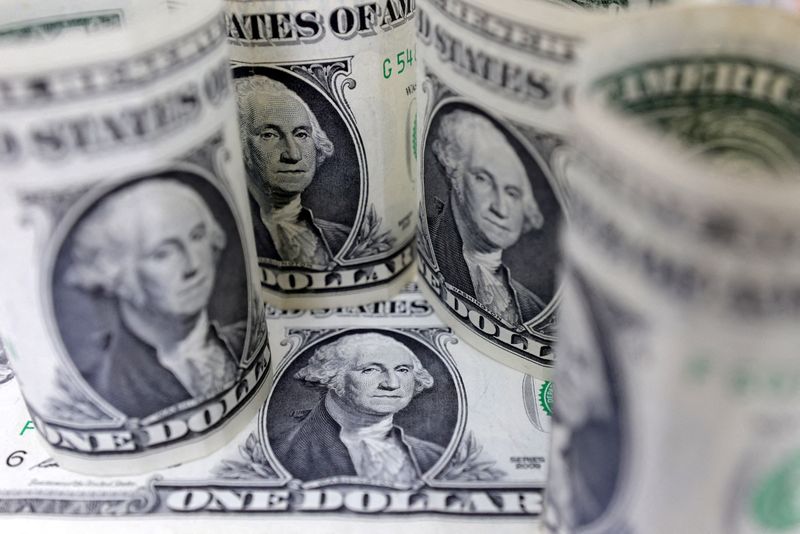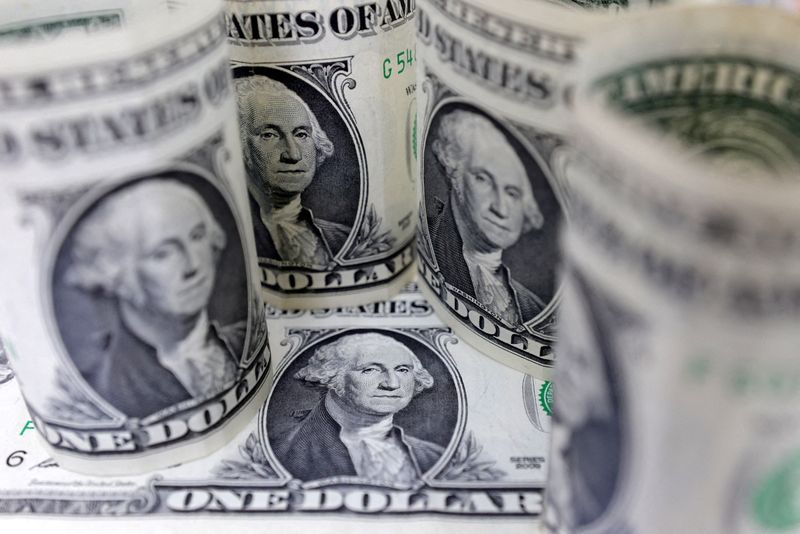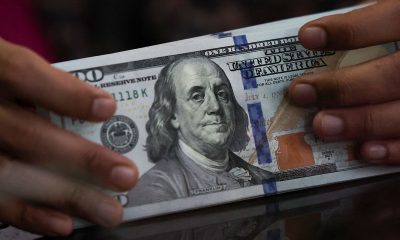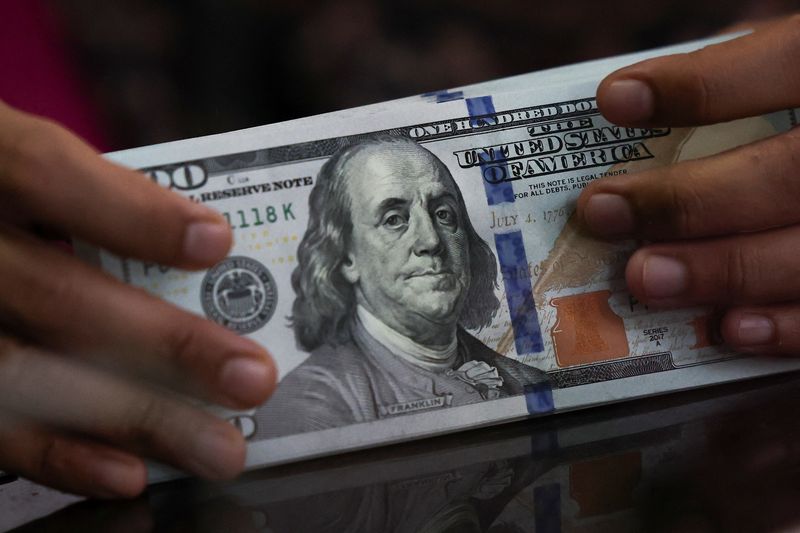Forex
US dollar drifts lower ahead of inflation data; yen nears 1990 lows

By Iain Withers and Gertrude Chavez-Dreyfuss
LONDON/NEW YORK (Reuters) -The dollar slipped on Monday in thin trading as investors focused on U.S. inflation data later this week, while the yen slipped to near 34-year lows versus the greenback as traders remained alert for any potential action from Japanese authorities to support the weakening currency.
The U.S. dollar fluctuated last week as traders digested a mixed bag of economic data, with a slowdown in services growth followed by unexpectedly strong hiring numbers that prompted the market to pare bets on Federal Reserve rate cuts this year.
The – which tracks the greenback against six other major currencies – was last down 0.2% at 104.19, while U.S. Treasury yields, which reflect interest rate move expectations, pushed higher.
Against the yen, the dollar firmed 0.1% to 151.745, putting it within a whisker of its highest since July 1990.
Japanese workers’ real wages fell in February for a 23rd consecutive month, data showed on Monday, suggesting higher prices kept up pressure on consumers’ spending appetite.
Inflation-adjusted real wages, a barometer of consumer purchasing power, fell 1.3% in February from a year earlier, data from Japan’s Labor ministry showed. It followed a revised decline of 1.1% in January.
“It seems to me like traders are testing the resolve of Japanese currency officials to keep that 152 level as a true resistance point,” said Helen Given, FX trader at Monex USA in Washington.
“After Japanese real wages posted yet another decline…and given the current global risk climate, the yen’s role as a traditional safe haven has been diminished of late and investors are flocking to gold and the U.S. dollar instead.”
Japanese Prime Minister Fumio Kishida said on Friday authorities will use “all available means” to deal with excessive yen falls, stressing Tokyo’s readiness to intervene in the market to prop up the currency.
Bank of Japan Governor Kazuo Ueda addressed the country’s parliament on Monday, but gave little away on monetary policy and said he had succeeded in adopting a simpler policy framework.
A former top currency official in Japan, Takehiko Nakao, told Reuters that authorities could intervene in the foreign exchange market to stem sharp falls in the yen “at any time” if the moves were sufficient.
In the United States, the main focus is on U.S. consumer price inflation for March due on Wednesday. Economists expect the headline consumer price index (CPI) to have risen 0.3 on a monthly basis, compared with 0.4% in February, according to a Reuters poll. Core CPI is also seen rising 0.3% for the month of March.
Ahead of the CPI data and after a strong jobs report last Friday, the U.S. rate futures market has reduced the odds of a June rate cut to 52.1%, down from 58% a week ago, the CME’s FedWatch tool showed.

The market has also pared back expectations for the number of rate cuts this year to two, from three to four a few weeks ago, according to LSEG’s rate probability app.
In the euro zone, currency investors will be looking to the European Central Bank’s (ECB) policy meeting on Thursday. The euro was up 0.1% at $1.0850, while sterling was flat at $1.2643. The base case for the ECB is to hold rates this week and possibly reinforce the possibility of a cut in June. But while the ECB is increasingly confident that inflation is heading back to its 2% target, it has remained vague about further easing. In cryptocurrencies, bitcoin was up 6.5% at $72,063 after hitting a three-week high of 72,732.59 earlier in the session.

 Forex3 years ago
Forex3 years agoForex Today: the dollar is gaining strength amid gloomy sentiment at the start of the Fed’s week

 Forex3 years ago
Forex3 years agoUnbiased review of Pocket Option broker

 Forex3 years ago
Forex3 years agoDollar to pound sterling exchange rate today: Pound plummeted to its lowest since 1985

 Forex3 years ago
Forex3 years agoHow is the Australian dollar doing today?

 Cryptocurrency3 years ago
Cryptocurrency3 years agoWhat happened in the crypto market – current events today

 World3 years ago
World3 years agoWhy are modern video games an art form?

 Commodities3 years ago
Commodities3 years agoCopper continues to fall in price on expectations of lower demand in China

 Economy3 years ago
Economy3 years agoCrude oil tankers double in price due to EU anti-Russian sanctions





























